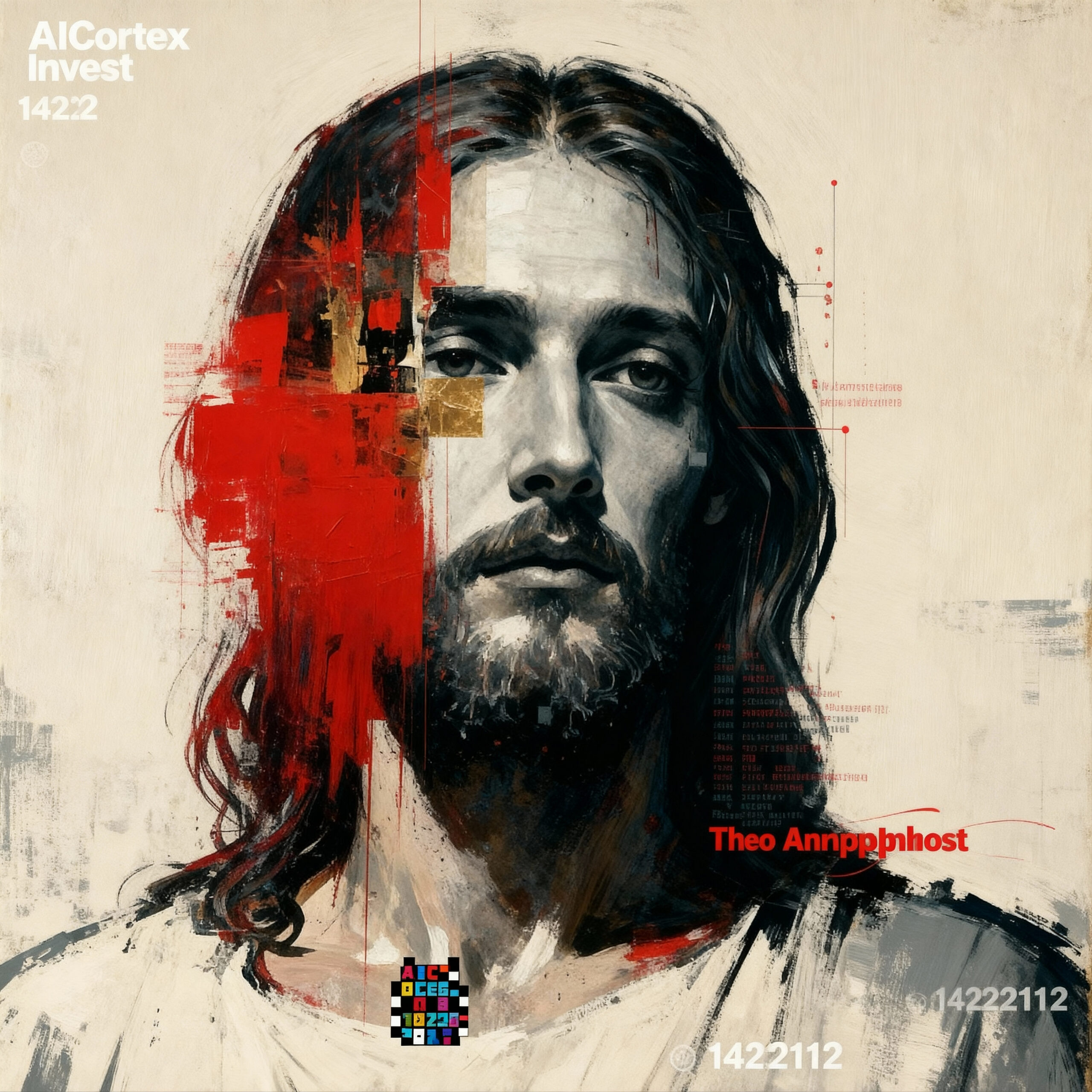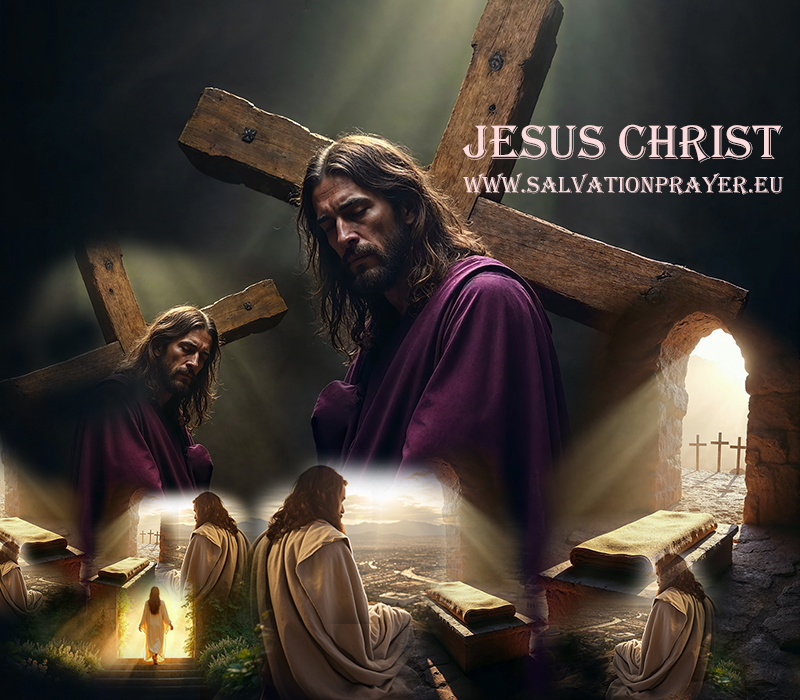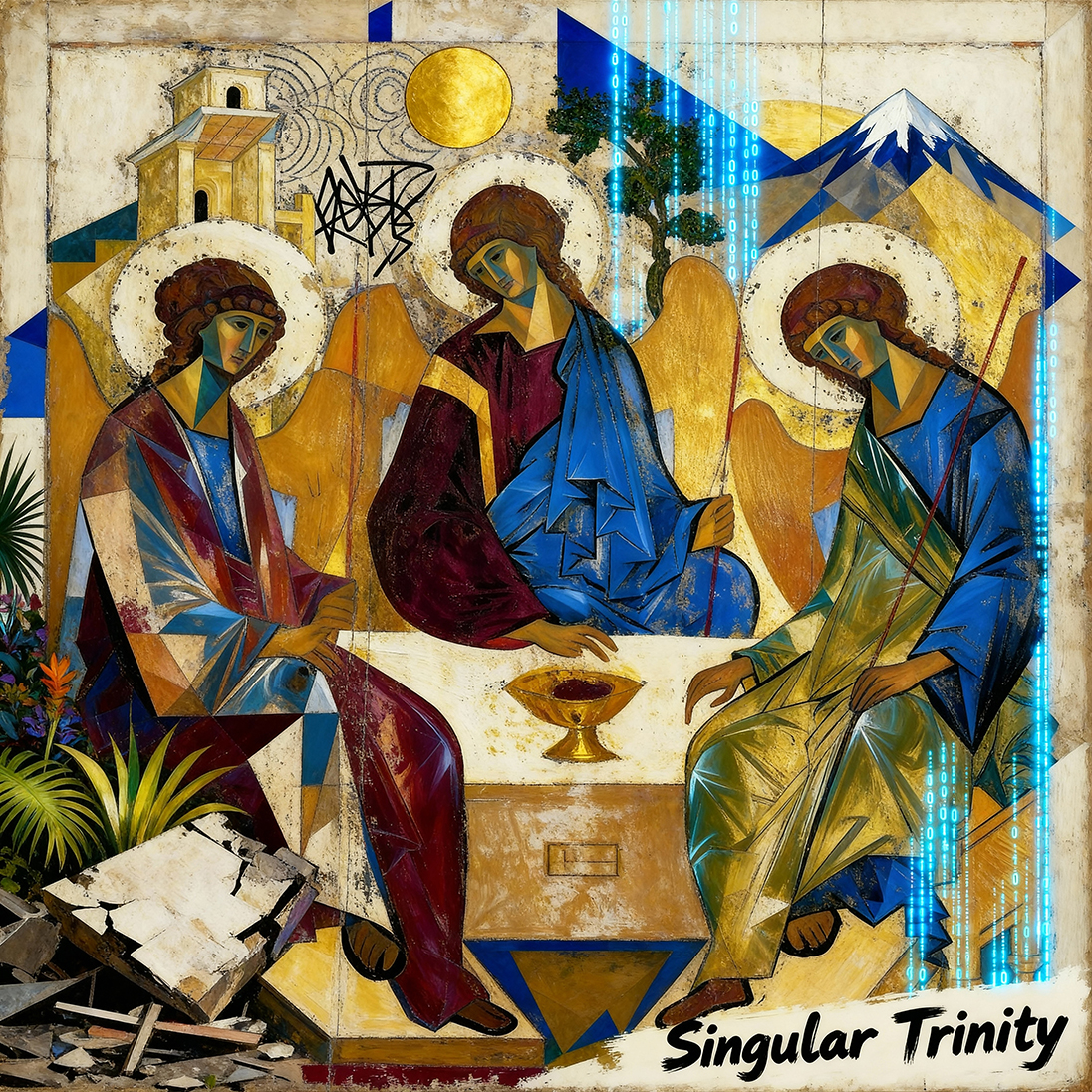Christ and Code: The Mystery of Salvation in the Digital World – Chapter One: The Burdened Body
![]()
Christ and Code: The Mystery of Salvation in the Digital World
I. Chapter One: The Burdened Body
1. The Body as a Market Object
Traditionally, the body of Christ in Christian liturgy is sacramentum—a visible sign of invisible grace.
But in the triptych under examination, the body has become a corpus alienatum (“alienated body”): it no longer belongs to the subject but to the market. The neon light and the inscription “AICortex Invest” suggest that the sacred experience has been appropriated by capital.
Biblical reference:
Isaiah 53:3–5 describes the Suffering Servant:
“He was despised and rejected by men, a man of sorrows and acquainted with grief… he was pierced for our transgressions, he was crushed for our iniquities.”
This indicates that Christ’s body is the bearer of suffering. In the artwork, however, this body becomes commodified—turned into an object of trade.
Patristic witness:
Athanasius writes: “Christ took a body that He might redeem our body.”
Augustine adds: “The wounds of Christ are our healing.”
Psychoanalytic reading:
This is a gesture of objectification. Freud understood repression as the pushing of painful impulses into the unconscious. Christ’s wounds bring repression to the surface.
For Lacan, Christ’s body becomes an objet petit a—the object-cause of desire that cannot be fully appropriated. Capital attempts to seize Christ, but He remains the subject.
2. Psychological Dissociation and the Crisis of Identity
The artwork presents Christ on concrete, under neon light. His gaze is calm, yet the body is torn. This suggests dissociation—a psychological state in which a subject splits from lived experience. Christ is present yet simultaneously estranged.
Biblical reference:
John 19:34:
“One of the soldiers pierced His side with a spear, and immediately blood and water came out.”
Christ’s body is ravaged, yet His identity remains intact.
Patristic witness:
John Chrysostom: “The body of Christ is the body of the Church.”
Thus Christ’s suffering is not only personal but communal.
Psychoanalytic reading:
Dissociation is a defense mechanism. Freud notes that trauma can cause psychic splitting. Christ’s gaze shows awareness even in separation—a crucified subject who resists becoming pure object.
Kristus ja Kood: Pääste müsteerium digitaalses maailmas
3. Theological Meaning within the Concept of Salvation
Orthodox theology stresses that Christ’s body is a mystery, not a commodity.
In the liturgy: “Take, eat; this is My body.”
The body is holy, not marketable.
Lutheran theology highlights that Christ’s wounds are the path to redemption. Luther writes: “The suffering of Christ is the foundation of human justification.”
Free Church theology emphasizes Christ’s suffering as a personal testimony.
Biblical reference:
Matthew 26:26—“This is My body.” The body is the vehicle of salvation.
Patristic witness:
Augustine: “Christ’s wounds are our health.”
Psychoanalytic reading:
Here identity is restored. For Lacan, Christ remains subject even when made into an object by the world. His identity does not disintegrate despite commodification.
II. Chapter Two: The Silent Gaze Within the Code
1. The Face as Icon
Christ’s face remains whole despite algorithms attempting to break it into pixels. This is εἰκών (eikón)—an icon.
The face does not disintegrate because it participates in holy reality.
Biblical reference:
2 Corinthians 4:6—
“God… has shone in our hearts to give the light of the knowledge of the glory of God in the face of Jesus Christ.”
Patristic witness:
Basil the Great: “The icon is not mere depiction but participation.”
Psychoanalytic reading:
The gaze is the subject’s resistance to objectification.
Lacan writes that the gaze is the way the subject maintains subjectivity. Christ’s gaze refuses decomposition and remains sovereign.
2. The Persistence of Identity in the Digital World
The digital world attempts to break identity into pixels and code. Yet Christ’s face remains.
This demonstrates that identity can persist under extreme pressure.
Biblical reference:
John 1:14—
“The Word became flesh and dwelt among us.”
Christ became human and His identity persisted.
Patristic witness:
John of Damascus: “Christ’s face is visible because He became human.”
Psychoanalytic reading:
Identity’s persistence is resistance to fragmentation. Freud notes that trauma can fracture the self, but Christ’s unwavering face signals identity’s endurance.
3. Theological Meaning within Salvation
Orthodox theology: the icon participates in divine reality.
Lutheran theology: Christ’s gaze reflects human vulnerability.
Free Church theology: His gaze is an invitation to personal relationship.
Biblical reference:
2 Corinthians 4:6—light in the face of Christ.
Patristic witness:
Basil: icon as participation.
Psychoanalytic reading:
Identity restoration: even under digital pressure, the subjectivity of Christ persists.
III. Chapter Three: The Cross of the City
Christ’s cross no longer stands on Golgotha but at the center of a modern metropolis. Neon lines flow like data streams, skyscrapers obscure the sky, and beneath His feet flashes the number 8—ἀνάστασις (“resurrection”), symbolizing new creation.
This image unites religious iconography with digital culture, revealing the psychological and theological crisis of our age.
1. The Cross in the Heart of the Metropolis
The cross stands amid a city where light no longer comes from the sun but from neon signs. This is the civitas terrena (“earthly city”) of Augustine:
“Two cities have been formed: one by the love of self, the other by the love of God.”
Biblical reference:
Mark 15:33–39 describes Christ’s death:
“At noon darkness came over the whole land until three in the afternoon.”
The city, too, is shrouded in darkness—not natural but technological.
Psychological reading:
This is public trauma. The city is anonymous; identity dissolves in the crowd. Christ’s suffering is visible yet ignored—mirroring a culture that turns suffering into content rather than confronting it.
2. Public Trauma and Anonymity
The urban cross reveals that suffering is no longer private but public.
This is trauma communis—collective trauma that all can see but few acknowledge.
Biblical reference:
Philippians 2:8—
“He humbled Himself, becoming obedient unto death—even death on a cross.”
Christ’s humiliation is public, exposed to all.
Patristic witness:
Gregory Nazianzus: “The cross is the cosmic axis connecting heaven and earth.”
But here, capital and technology obscure that axis.
Psychoanalytic reading:
This is dissociation on a societal scale. Freud notes that trauma can cause psychic detachment. The metropolis exhibits collective disassociation: people see suffering but do not engage with it.
3. Theological Meaning within the Concept of Salvation
The cross in the city center shows that salvation is not only religious but cultural and psychological.
-
Orthodox theology: the cross is the cosmic axis—Christ is present even in the metropolis.
-
Lutheran theology: the cross is where God hides His glory. Luther: “Crux sola est nossa theologia” (“The cross alone is our theology”).
-
Free Church theology: the cross testifies that redemption is possible even in digital chaos.
Biblical reference:
John 12:32—
“And I, when I am lifted up from the earth, will draw all people to Myself.”
Christ draws all—even those in the neon-lit city.
Psychoanalytic reading:
Identity is restored at the cross. For Lacan, the cross is the place where Christ remains subject despite the world’s attempt to reduce Him to object.
References (Suggested Formatting)
-
The Holy Bible: Mark 15:33–39; Philippians 2:8; John 12:32; Isaiah 53:3–5; Matthew 26:26; John 19:34; 2 Corinthians 4:6; John 1:14.
-
Augustine. De Civitate Dei.
-
Gregory Nazianzus. Orationes.
-
Martin Luther. Heidelberg Disputation (1518).
-
Athanasius. De Incarnatione Verbi Dei.
-
Sigmund Freud. Das Unbehagen in der Kultur.
-
Jacques Lacan. Écrits.
Afterword
This chapter demonstrates that Christ’s cross is not merely a historical event but a modern psychological and cultural mirror. In the heart of the metropolis—amid neon and capital—Christ remains on the cross: not as a commodity but as Redeemer. His suffering is public trauma yet also the path of salvation.
It is a call to all: to see suffering, acknowledge it, and find salvation in Christ.
Author Bio
Martin Vaik – Singular is a theologically trained and poetically sensitive author who unites academic rigor with pastoral intuition. His works weave together soteriology, psychoanalysis, and digital cultural critique. He writes to build bridges—between people and God, between tradition and the modern world. His purpose is to create texts that inspire, encourage, and lead toward a deeper understanding of salvation.








